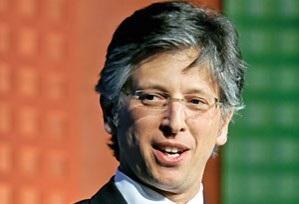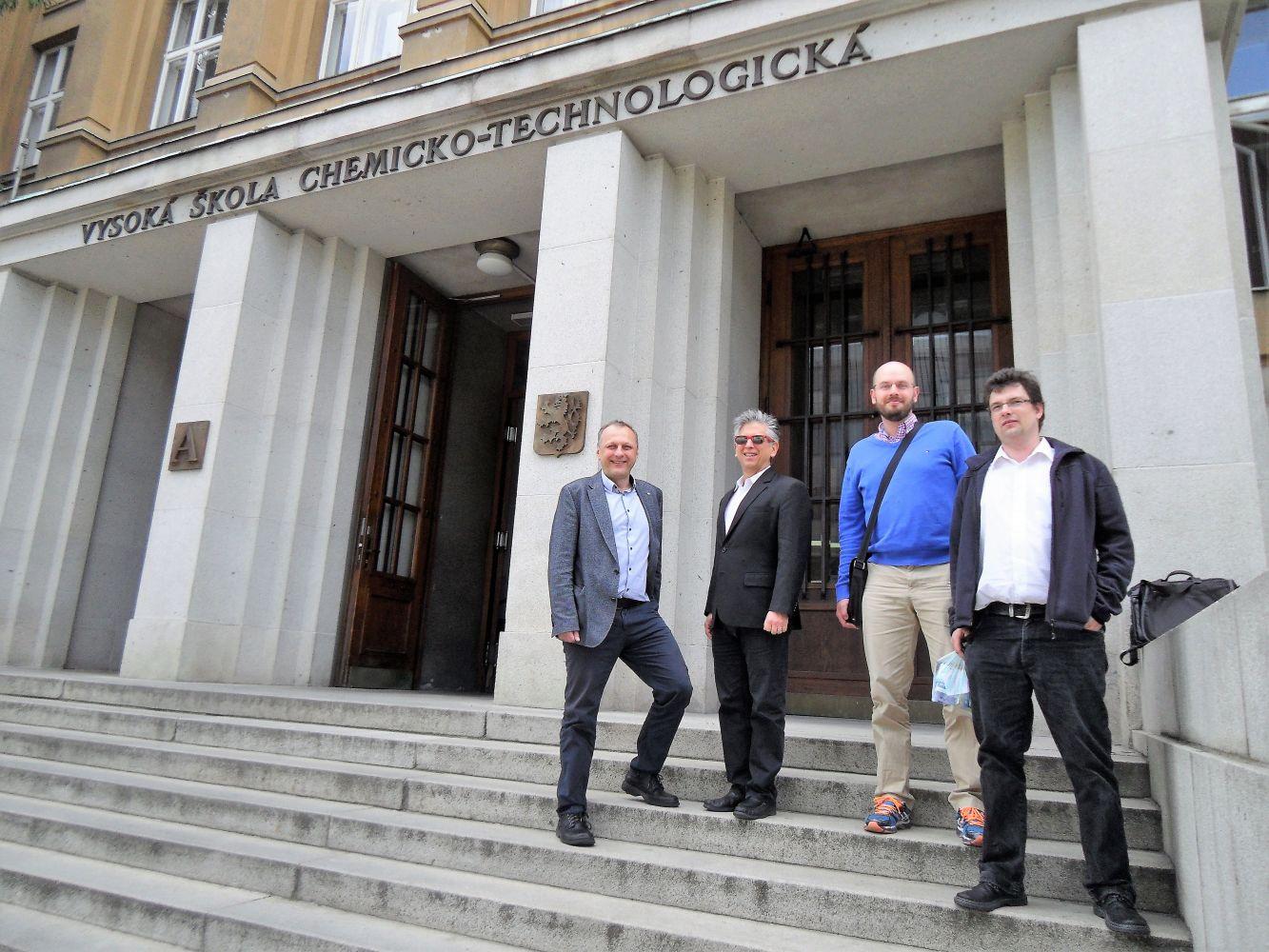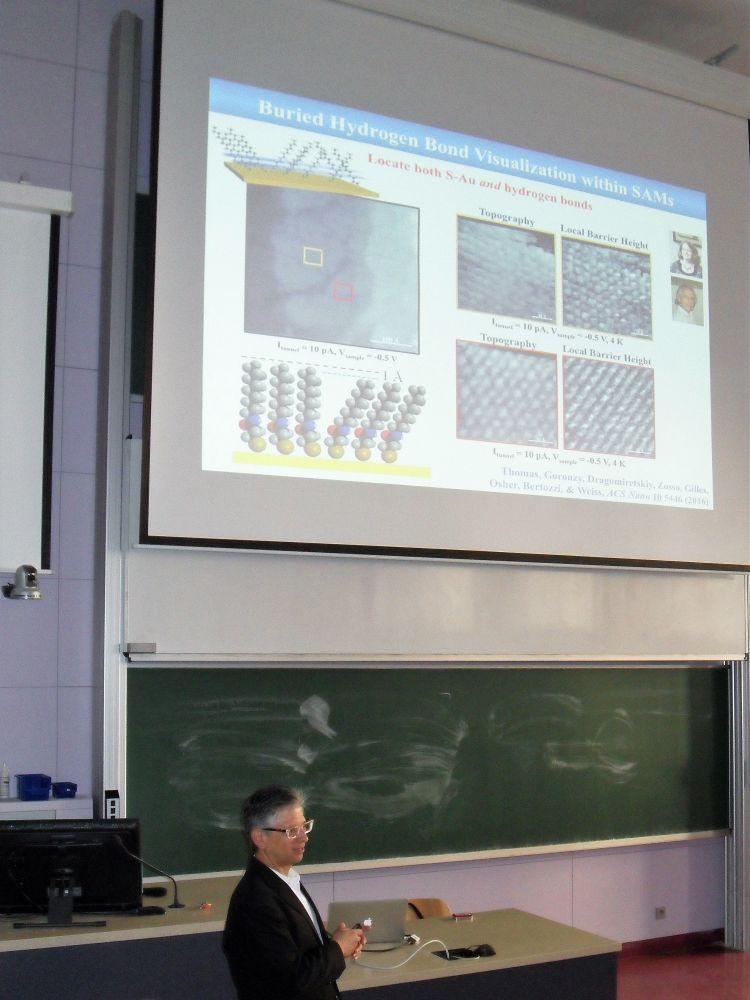
Prof. P. S. Weiss bude přednášet na VŠCHT
Ústav anorganické chemie Vás zve na přednášku - Cooperative Function in Atomically Precise Nanoscale Assemblies.
- čtvrtek 8. 6. 2017, 10:00
- posluchárna BI
Přednáška bude přednesena v anglickém jazyce
Prof. Dr. Paul S. Weiss
He is a leading American nanoscientist at the University of California, Los Angeles.
He holds numerous positions, including UC Presidential Chair, Distinguished Professor of Chemistry and Biochemistry and of Materials Science and Engineering.
He is founding Editor-in-Chief of ACS Nano.
From 2009–14 he held the Fred Kavli Chair in NanoSystems Sciences and was the director of the California NanoSystems Institute.
Weiss has co-authored over 300 research publications and holds over 30 US and international patents.
Abstrakt přednášky
We use molecular design, tailored syntheses, intermolecular interactions, and selective chemistry to explore the ultimate limits of miniaturization. We direct molecules into desired positions to create nanostructures, to connect functional molecules to the outside world, and to serve as test structures for measuring single or bundled molecules. Interactions within and between molecules can be designed, directed, measured, understood, and exploited at unprecedented scales. Such interactions can be used to form precise molecular assemblies, nanostructures, and patterns, and to control and to stabilize function. We selectively test hypothesized mechanisms of function by varying molecular design, chemical environment, and measurement conditions to enable or to disable function and control using predictive and testable means. Critical to understanding these variations has been developing the means to make tens to hundreds of thousands of independent single-molecule/assembly measurements in order to develop sufficiently significant statistical distributions, while retaining the heterogeneity intrinsic in the measurements. We use a number of excitation mechanisms to induce changes in the molecules and assemblies, including electric field, light, electrochemical potential, ion binding, and chemistry. We measure the electronic coupling of the contacts between the molecules and substrates by measuring the polarizabilities of the connected functional molecules. We have likewise developed and applied the means to map buried chemical functionality and interactions. The next steps are to learn to assemble and to operate molecules together, both cooperatively and hierarchically, in analogy to biological muscles. We discuss our initial efforts in this area, in which we find both interferences and cooperativity.










